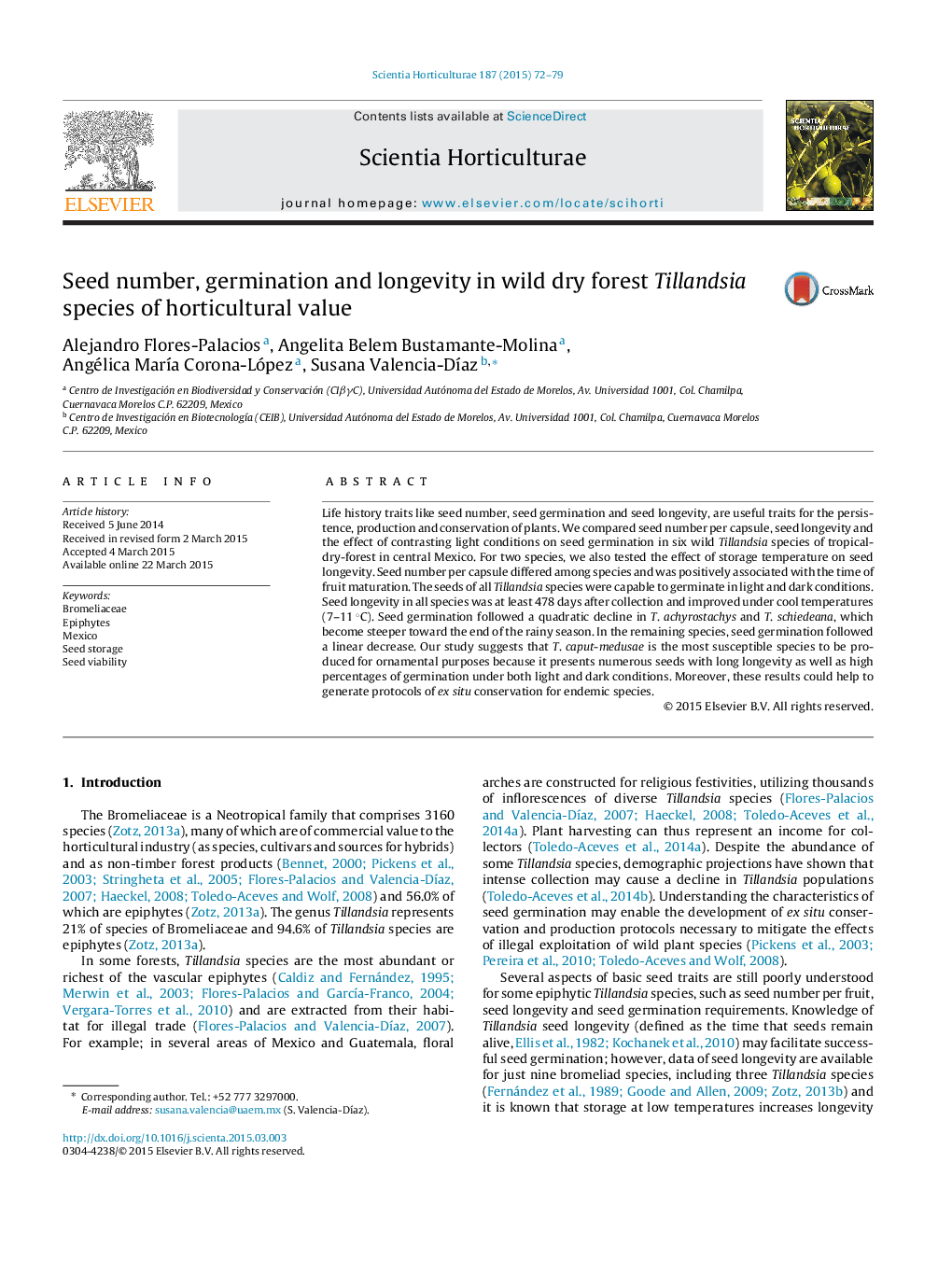| Article ID | Journal | Published Year | Pages | File Type |
|---|---|---|---|---|
| 4566364 | Scientia Horticulturae | 2015 | 8 Pages |
•This study shows results about seed traits of wild epiphytes with horticultural potential.•Seed number of epiphytic Tillandsia species may be related with the fruit maturation.•Seed germination of epiphytic Tillandsia species is indifferent to light.•Seed longevity of Tillandsia would facilitate the formation of a seed bank.•Such seed characteristics allow the development of conservation-management protocols.
Life history traits like seed number, seed germination and seed longevity, are useful traits for the persistence, production and conservation of plants. We compared seed number per capsule, seed longevity and the effect of contrasting light conditions on seed germination in six wild Tillandsia species of tropical-dry-forest in central Mexico. For two species, we also tested the effect of storage temperature on seed longevity. Seed number per capsule differed among species and was positively associated with the time of fruit maturation. The seeds of all Tillandsia species were capable to germinate in light and dark conditions. Seed longevity in all species was at least 478 days after collection and improved under cool temperatures (7–11 °C). Seed germination followed a quadratic decline in T. achyrostachys and T. schiedeana, which become steeper toward the end of the rainy season. In the remaining species, seed germination followed a linear decrease. Our study suggests that T. caput-medusae is the most susceptible species to be produced for ornamental purposes because it presents numerous seeds with long longevity as well as high percentages of germination under both light and dark conditions. Moreover, these results could help to generate protocols of ex situ conservation for endemic species.
